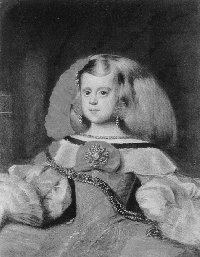MYSTERIOUS CANVASES

Years passed and new canvases were added to the collection. Scholars did not pay much attention before or after the Russian Revolution. A mistake, because there were several pictures dating from the Renaissance, painted on boards by Italian masters of the Pisan, Bolognese, Venetian, and Roman schools. Fragmentary information has it that among the authors were Pisanello, Giovanni Bellini, and Vittorio Carpaccio whose works are proudly on permanent exhibition in the Louvre and Hermitage. The collection included such giants of the painting as Anton Raphael Mengs, Annibale Carracci, Giovanni Battista Tiepolo, and even Pieter Bruegel the Elder. The latter's works surviving the ravages of time (about 30 in all) are considered gems on display at the world's most reputed museums (one hangs in the Louvre in Paris and another in New York's Metropolitan), but there are none in the Hermitage in St. Petersburg and legend has it that this museum was at one time (before the Soviets, to be sure) prepared to ship off three Rembrandts to Vienna in exchange for one Bruegel, as the museum had a dozen Rembrandts. And to think that all the while there remained a genuine Bruegel on remote provincial display!
Nizhyn's excellent collection was not destined to see an inheritor. It was not even properly catalogued. Nothing can be done about this now; 50 of its best canvases vanished into thin air during the war, among them Rubens's Mother, Carracci's Narcissus by the Spring, and Tiepolo's Hercules and Omphala.
Were they looted by the Nazis? The Ministry of Culture's restitution lists make no mention of these canvases and the same is true of the lists of surviving cultural valuables appropriated by the Nazis in the USSR, published recently in Germany. Meanwhile, local history experts in Nizhyn claim that the most precious items on display were hidden in the city, although no one knows where or what has become of them, simply because those who could have shed some light on this mystery are all dead. In other words, it is quite possible that some of the priceless masterpieces belonging to the Ukrainian nation are now in private Ukrainian, Russian, or maybe American collections.
Now and then canvases by good, although little-known, nineteenth century Western artists appear at Kyiv auctions and the sellers remain incognito. Why? Simply because they are afraid they might lose a couple thousands? This is peanuts compared to prices on the world market. Moreover, Ukrainian patrons do not like anonymity, especially when dealing with foreign works. And nor is it likely that such anonymous sellers part with their last family treasures to feed their starving families. No one knows how many works of art salvaged, confiscated, or simply stolen during the war are still kept by the descendants of all those military or NKVD "victors over fascism."
Restitution is a notion dreaded by almost every art collector, in Ukraine and elsewhere in the world, hence such a small number of such identified collectors: Dychenko, Syhalov, Ivakin, Hnatiuk, and several others. The rest prefer to enjoy their treasures away from the public eye. And the reason for this "underground status" is not so much the fear of being robbed as the pictures' dubious background.
Consider this generally known fact. Canvases by such leading Russian painters as Levitan, Korovin, and Vrubel have more then once appeared at Ukrainian auctions. A well-known Ukrainian collector told me, strictly off the record, of course, that there are totally unknown pictures by Serov, Borisov-Musatov, Malevich, and Vrubel kept in private collections in Kyiv. Back in the 1950s, a Soviet officer's family in Smila, a town in Cherkasy oblast, had a Gustave Courbet in its sitting room (my mother was friends with that officer's daughter and often saw the canvas). In Cherkasy, an absolutely ignorant "art dealer" showed me a Gustav Klimt. A year later I learned that he had sold it for $2,000 (at Sotheby's each Klimt would start with a six-digit figure). In the early 1900s, a teenager offered me a late fifteenth century icon of the Rostov-Suzdal school for 500 rubles. I tried to talk him into going to a museum but he would not listen.
And the situation with the national museums leaves many open questions. Habitually, we adore Velasquez's Infanta in Kyiv and Ribeiro's Saint in Lutsk, and seem to ignore the Madonna del Impammanta in Cherkasy. Painted on a large board, it is believed to be a copy of Raphael's well-known canvas, made by Rubens's school. Its identification is old and questionable, because copies were more often than not smaller than the original and never made on boards, only on canvas. In view of this, the picture was on more than one occasion slated for transportation to Leningrad for expert examination. For some reason or other this was not done and now it cannot be for want of funds. Some believe that there is Raphael's self-portrait in Cherkasy. There is still time to make sure, or is there?
In lieu of an epilogue: I happened to overhear a conversation at the Mystetstvo art store in Kyiv. A young man, apparently an antique dealer, asked a salesgirl if they had received something new in the antiquities section. He was sending a panel truck loaded with antiquities abroad, but there was still room, and the next one would be leaving in a week.
Newspaper output №:
№35, (1998)Section
Culture





